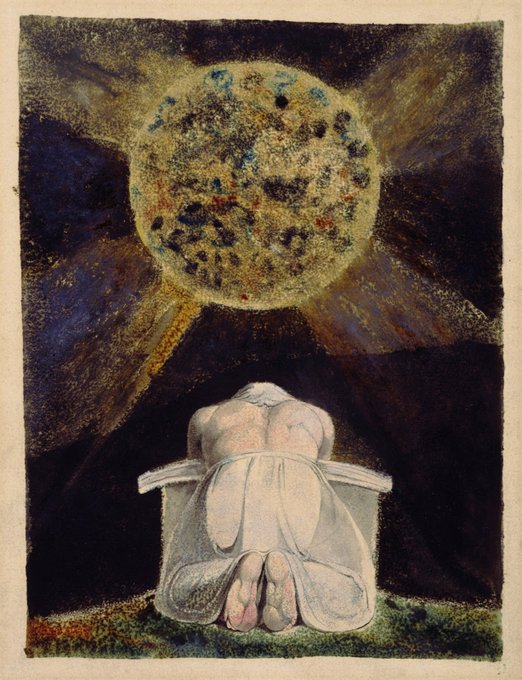The Mermaid. Harald Oskar Sohlberg (1869 – 1935) was a Norwegian romantic landscape painter. He hardly ever painted human forms, which makes the sudden explosion of a mermaid into his symbolic repertoire, all the more miraculous.
@timlottwriter someone must have dropped some sourdough yeast into your algorithmic filter bubble
Pierre Marcel-Béronneau was a French Symbolist painter (1869–1937). "One of the most brilliant students" of Gustave Moreau " he also depicted myths. He brought a haunted, evil quality to the figures of Salome and Orpheus.
"I do not understand why, when I ask for grilled lobster in a restaurant, I'm never served a cooked telephone.” Said Salvador Dali. Telephones featured in many of his artworks in the 1930s. "Dali believed that such objects could reveal the secret desires of the unconscious."
@richmondie I hear you. There are however parallels with other Blake images from this time. It is always possible that this is yet another case of misattribution caused by and amplified by the internet.
"Children of the Future" (1972) by Bruce Pennington. Pennington is a British painter who created science fiction and fantasy novel cover art for Isaac Asimov, Clark Ashton Smith and Robert A. Heinlein. He is famous for his flying saucers.
Jean Delville was a Belgian painter (1867-1953). He was a Neoplatonist & Theosophist who believed in a higher realm. Following the failure of the ‘New Christ’ Krishnamurti in 1929, he had a burn-out & left his family for a young woman. His art and Theosophy fell out of fashion.
"The Treasures of Satan" by Jean Deville (1867-1953). The depiction of Satan under water was a first in Western Art. Instead of wings he has long octopus tentacles. His 'treasures' are the sleeping figures surrounded with jewels & gold coins; representing materialism & avarice.






















